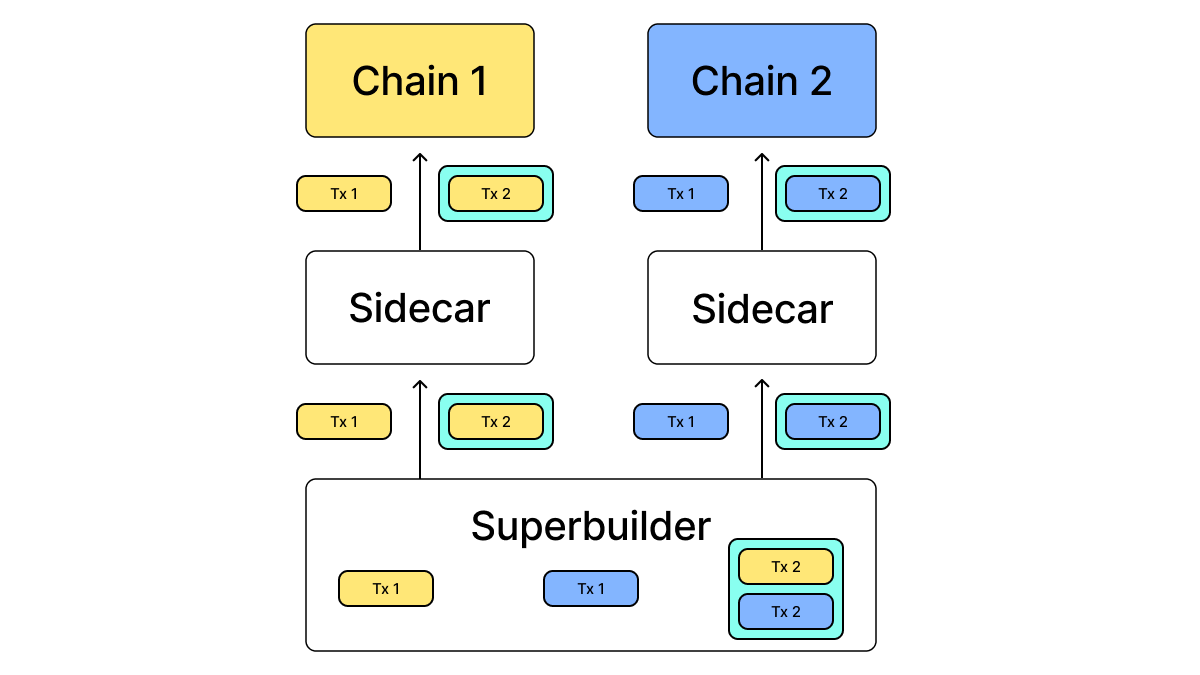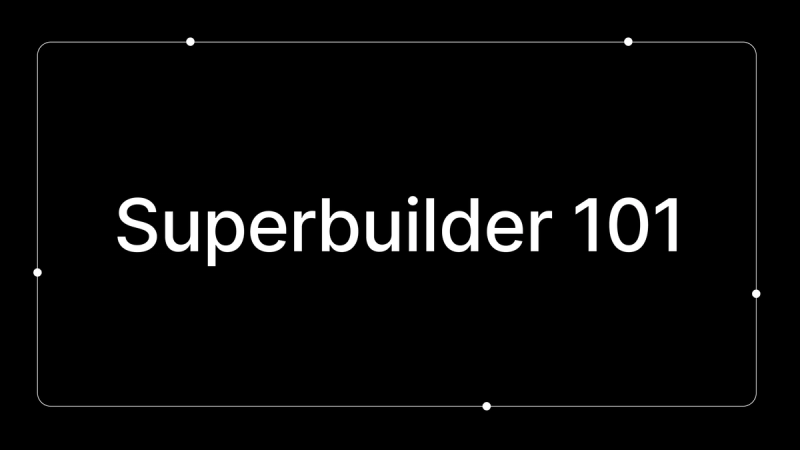Superbuilders are block builders that build blocks for multiple chains at the same time. But how do they actually work? Here we provide a step-by-step look at the lifecycle of transactions passing through a superbuilder, from submission to execution.
To gain access to composability via a superbuilder, chains need to implement a form of proposer-builder separation. Ethereum first originated proposer-builder separation (PBS) to allow it to have two distinct, specialized entities for building blocks and proposing blocks. By implementing PBS on many chains, superbuilders can guarantee the atomic execution of transactions across chains.
(Read more on PBS: https://ethereum.org/en/roadmap/pbs/)
When transacting on a single chain, users submit transactions to chains as usual. For cross-chain interactions, users submit a bundle of transactions that includes many transactions for multiple chains. Bundled transactions will be atomically executed, meaning that all transactions in the bundle will either all be valid and executed, or if one transaction is invalid, none of the transactions in the bundle will be executed.

Bundles and individual transactions are passed to the builder via a sidecar that acts as the interface between builders and chains. Builders select transactions from the mempool of all available transactions and order them in a block.

For Javelin, blocks are divided into many chunks. A top-of-block (ToB) slot is designated for atomic bundles. By being at the top of the block, builders can build with the surety that there will be no changes to the state of the chains in the block that could impact the validity of the transactions they are guaranteeing.
The ToB slot is followed by the rest-of-block (RoB) slots. Each chain that is using the superbuilder has their own RoB slot reserved for them. Having separate chunks for each chain allows for chains to have more control over how their blocks are produced. With this design, chains can add custom rules to how their blocks are produced, including adding privacy, encryption, and ordering rules for transactions in their blocks. The design is intentionally built to enable composability between chains while still allowing for chains to remain fully sovereign.

The builder is state aware, meaning they can see the prior state of all chains for which they are building. By knowing the prior state of all chains and having control over the contents of the next block, they can guarantee that all transactions within a bundle will execute before the bundle is returned to chains. Atomic execution is a necessary guarantee that superbuilders provide that allows for cross-chain interactions to be as seamless as single-chain interactions.
Builders send the completed block back to the sidecar which forwards the block to chains. Chains receive the block and progress state based with the transactions in the block.

Though complex on the backend, the user experience when interacting across chains with a superbuilder is as simple as an interaction on a single chain. Composability is a basic primitive upon which all blockchains are built, and superbuilders help to bring composability from only being available on individual chains to being available across chains.
